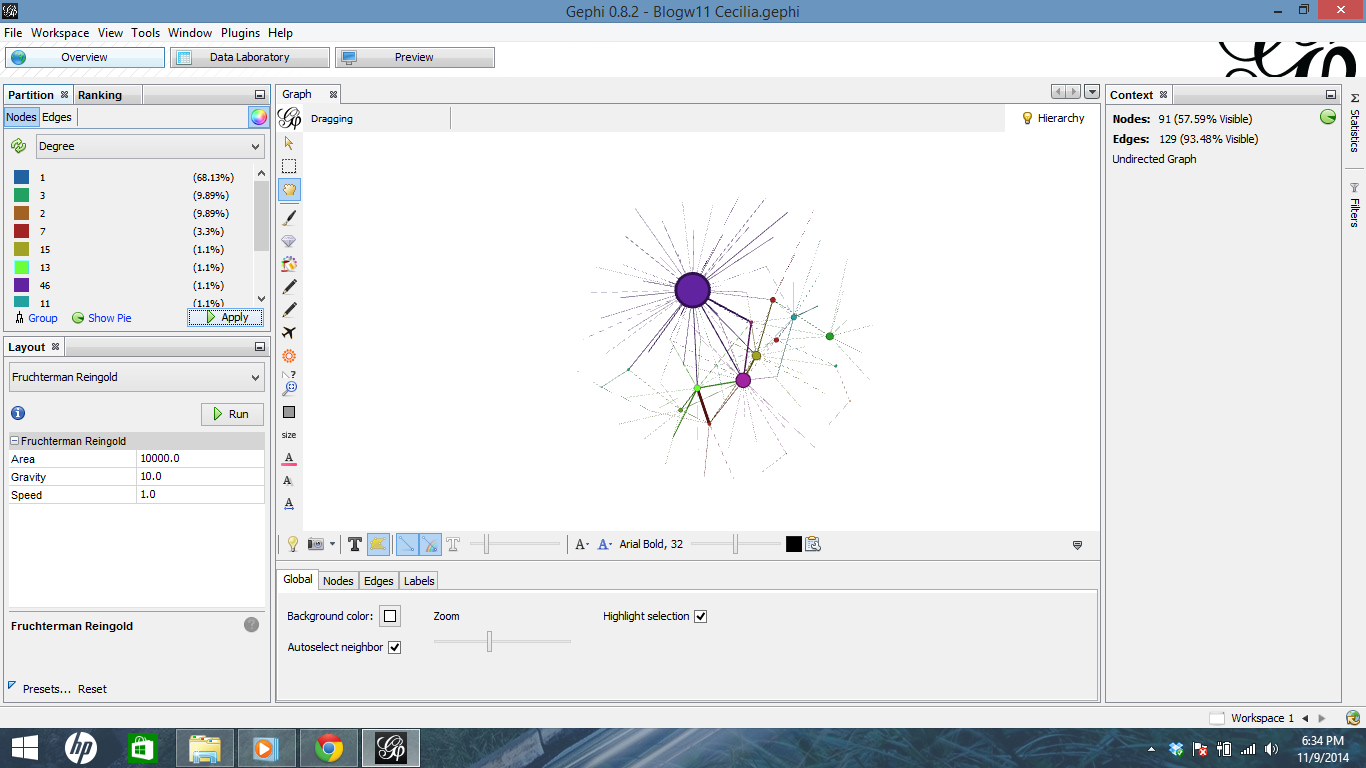INTEGRATION OF SOCIAL NETWORK ANALYSIS IN GEPHI AND TABLEAU ANALYSIS (CCK11 DATASET)
The data were taken from CCK11 dataset provided in the course.
The finding are:
Closeness: There are 15 participants that are highly connected to others within their own community. Participant's ID 111,118,116,117,138...(see
Betweenness: There are 15 participants that highly act as bridges between communities in the blog. Among them, participant 3 and 10 are the most famous connectors.
Modularity: There are seven (0-6) communities conformed in the blog. The community 2 has the most participants and the community 4 has the least ones.
Betweenness/Modularity: Group 0 has two main connectors between communities. They are participant 25 and 3. / Group 1 has two main connectors between communities. They are participant 64 and 9. / Group 2 has five main connectors between communities. They are participant 10, 11, 17, 18 and 20. / Group 3 has two main connectors between communities. They are participant 60 and 15. / Group 4 has one main connector between communities. It is participant 78. / Group 5 has one main connector between communities. It is participant 109. / Group 6 has one main connector between communities. It is participant 112.






